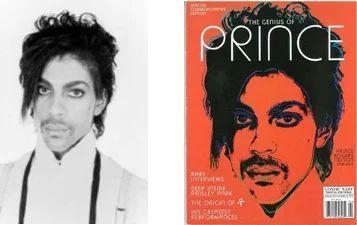In Short
The Background: The Supreme Court reviewed a Second Circuit decision holding that the Andy Warhol Foundation had impermissibly licensed a portrait of musician Prince that was created by Andy Warhol but based on photographer Lynn Goldsmith's copyrighted photograph.
The Decision: The Court held that the Foundation's use of the Prince portrait weighed against the first factor under a copyright fair use analysis because Goldsmith's photograph and the Foundation's licensing share the same purpose (depicting Prince in magazine stories about Prince) and AWF's use of the photograph was of a commercial nature.
Looking Ahead: The Warhol decision provides much-needed guidance on the purpose and character of fair use, and sheds light on licensing questions posed by generative AI artwork based on third-party works.
On May 18, 2023, the U.S. Supreme Court affirmed a Second Circuit decision holding that Andy Warhol's silkscreen depictions of famous musician Prince, which were based on another party's photograph of him, do not fall under copyright's fair use doctrine. Andy Warhol Found. for Visual Arts, Inc. v. Goldsmith, No. 21-869, 2023 WL 3511534 (U.S. May 18, 2023).

The dispute arose from a 1981 photograph of Prince taken by photographer Lynn Goldsmith. Years later, Goldsmith granted a limited license to Vanity Fair magazine for a "one time" use of the photograph as an artist reference. Vanity Fair hired Warhol to create the illustration, and Warhol used Goldsmith's photograph to create a series of prints that became known as the "Prince Series."
After Prince's untimely death in 2016, the Andy Warhol Foundation for the Visual Arts ("AWF") licensed one of the Prince Series portraits to Condé Nast for a special edition magazine commemorating Prince. When Goldsmith saw the magazine cover, she notified AWF of her belief that it had infringed her copyright. AWF then sued Goldsmith for a declaratory judgment of noninfringement or, in the alternative, fair use.
The District Court considered the four fair use factors in 17 U. S. C. §107—(i) the purpose and character of the use, including whether such use is of a commercial nature or is for nonprofit educational purposes; (ii) the nature of the copyrighted work; (iii) the amount and substantiality of the portion used in relation to the copyrighted work as a whole; and (iv) the effect of the use upon the potential market for or value of the copyrighted work—and granted AWF summary judgment on its defense of fair use. The Court of Appeals for the Second Circuit reversed, finding that all four fair use factors favored Goldsmith. The case was then appealed to the Supreme Court, where AWF contended that under the first factor of a fair use analysis, its use of the Prince Series is "transformative" because the works convey a different meaning or message than the original photograph.
In a 7–2 decision, authored by Justice Sotomayor (and joined by Justices Thomas, Alito, Gorsuch, Kavanaugh, Barrett, and Jackson), the Court held that, while the "transformativeness" of a use may outweigh its commercial character, AWF's use of the Prince Series weighed against a finding of fair use because Goldsmith's photograph and AWF's licensing share the same purpose (depicting Prince in magazine stories about Prince) and AWF's use of the photograph was of a commercial nature. Id. at *14. As the Court explained, "to hold otherwise would potentially authorize a range of commercial copying of photographs, to be used for the purposes that are substantially the same as those of the originals .... [a]s long as the user somehow portrays the subject of the photograph differently, he could make modest alterations to the original, sell it to an outlet to accompany a story about the subject, and claim transformative use." Id. at *18.
In a strongly worded dissent authored by Justice Kagan (and joined by Chief Justice Roberts), the Court's minority was noticeably hostile in response to the pointed criticisms levied by the majority opinion, which evidenced an unusual rift between often-allies J. Kagan and J. Sotomayor. The dissent strongly opposed the majority's fair use boundaries as constrictive, and expressed its concern that the Warhol decision would hamper creative progress and undermine the creative freedom of artists.
Taken together, the strongly conflicting opinions illustrate the strength of both arguments as to what ultimately fosters innovation and creativity under the Copyright Act. Time will decide Warhol's lasting significance for authors, artists, and creators—while some champion the result as a victory for artists whose work may be used as a starting point for more well-known artists and creators, others argue that it will have a chilling effect on artistic innovation.
The Court's decision reconciles a circuit split based on its ruling in Google LLC v. Oracle Am. Inc., in which it upheld a Ninth Circuit decision holding that the exact copying of computer code could be transformative if it "alter[ed] the copyrighted work with new expression, meaning or message." 141 S. Ct. 1183, 1202-04 (2021) (internal citation omitted). The Warhol decision also provides much-needed guidance on the purpose and character of fair use. If an original work and secondary use share the same or highly similar purposes, and the secondary use is commercial, "the first fair use factor is likely to weigh against fair use, absent some other justification for copying." Warhol, 2023 WL 3511534, at *11.
Looking ahead, it is worth considering the potential implications that the Warhol decision will have on generative AI. Copyright law is currently grappling with the question of whether AI art based on third-party works is sufficiently transformative to be considered fair use, and while the Warhol decision does not provide a definitive answer, it will undoubtedly influence the discussion as it relates to licensing third-party works.
Three Key Takeaways
- If an original work and secondary use share the same or highly similar purposes, and the secondary use is commercial, the first fair use factor is likely to weigh against fair use, absent some other justification for copying.
- The Warhol decision reconciles a circuit split based on the Court's ruling in Google LLC v. Oracle Am. Inc., in which it upheld a Ninth Circuit decision holding that the exact copying of computer code could be transformative if it "alter[ed] the copyrighted work with new expression, meaning or message."
- Looking ahead, it is worth considering the potential implications that the Warhol decision will have on generative AI that is based on third-party works.
The content of this article is intended to provide a general guide to the subject matter. Specialist advice should be sought about your specific circumstances.






